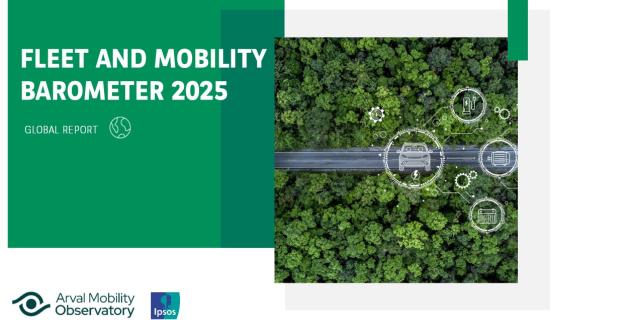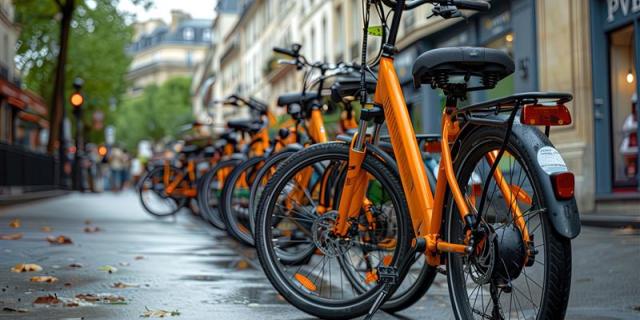
Our World Mobility Tour: Tel Aviv, the "start-up" city
Paris 13th of January 2021,
During this year, we will discover how municipalities are managing the mobility topic in their cities. What is key for them, what kind of infrastructures are developed and how they support all their changes.
We will start our World Mobility Tour with the city of Tel Aviv, the “start-up city”, which leverages its high-tech ecosystem to support its transformation. Our discussion with Meital Lehavi, the Deputy Major with responsibility for Transportation will enable us to discover all these mobility aspects and the vision of this city regarding the mobility topic.
Arval Mobility Observatory: firstly, thank you for taking time to share with us the vision for mobility in your city. Tel Aviv has defined the following strategy: to put residents and their needs at the center of their strategy. Regarding transportation and urban mobility, what does it mean?
Meital LEHAVI: Pedestrians are at the centre of our attention. We divide the areas of the city and define a 10 year plan regarding the development of trains, public transports, bicycles etc…keeping in mind that pedestrians are on the top of our pyramid and private cars at the bottom of our pyramid. This is what we call our vision. We want to develop sustainable and safe, more efficient solutions for our city dwellers. Safe environment for walking, the well-being of our pedestrians is a top priority.
How do you promote these solutions?
The urban target for 2025 is to double the percentage of urban travel made by city residents by bicycle and scooter from 11% to 22%, while improving the level of road safety for pedestrians and cyclists. By 2025, the network of bicycle paths will be expanded from 140 km today to 360 km in total. This plan is expected to reduce traffic congestion by 30 % and accidents involving bicycles by 40 %.
During the Covid-19 pandemic, the municipality has converted 13 streets to pedestrian and cyclists only. And we plan to develop our bicycle highway in the metropolitan area called Ofenidan..Lighting systems and road facilities will be installed, such as fountains, rest areas, orientation maps….
We also have developed other public mobility solutions and plan to expand them in our Vision plan. Indeed, three light rail lines will be introduced gradually from 2022 to 2026 and 3 metro lines will be also developed. We have planned to build 22 new underground stations.
Public transport routes will be also deployed in the coming years; the network is expected to continue to expand by 2025: 140 km of public transport routes will be deployed in the city (compared to 60 km today).
What is the place of cars in this city? Moreover, what are your targets?
In our vision, private cars are at the bottom of our pyramid. We have to find the balance between a growing demand for parking spaces and limited supply. That is why the development of alternative mobility solutions is key and the support of them also, increasing the number of parking spaces for 2 wheels, decreasing the number of parking spaces (-13 000) to 330 000 parking spaces in the future supported by the development of train, metro and public transport.
We manage a parking policy, which defines and manages the areas allocated for parking. This policy plays a key role in changing travel habits.
We have also developed a carsharing service with Autotel, which is a joint private municipal free-floating car sharing scheme, and a municipal bike sharing solution with Tel O Fun with more than 1500 bicycles.
A shared e-scooters service is available with more than 7500 e scooters in the city. Tel Aviv has become the first city in the world to demand scooter-share companies provide helmets for all riders.
With the development of all these two wheels solutions, the number of injuries was increasing. That is why the city of Tel Aviv has implemented a regulation with 18 rules, which has since been implemented in other cities in the country.
As a Smart City, which IoT solutions have you developed? Could you please explain which ones and why?
The relationship between local industries, municipalities and private sector enables us to support many pilots in the city. Transport start-ups have at their disposal a location in order to develop their pilots. We work with Mobileye regarding autonomous vehicle. ElectReon has launched a pilot too. Last September, the Municipality launched a pilot project with ElectReon to install wireless electric roads for charging public transportation in the city. The pilot project will enable specially equipped electric buses, capable of being charged directly from under-road electric infrastructure, to travel on the route. Smart parking spaces are also available. Smart traffic lights systems have also been developed. Thanks to camera technology, if there are for example bicycles or buses the lights will be managed in order to decrease congestion and manage traffic. All these solutions have a key target: to increase security, road safety.
What is your policy in terms of open data? How can data help the city to achieve its targets in term of sustainability?
TLV Open Data gives access to the municipality’s database on population and transportation. You can find Tel O fun Bicycle stations. We partnered with MOBI to set up sensors, cameras, Bluetooth devices throughout the city to count the number of vehicles entering, understand how much time spent in traffic etc…. We work also with Waze and use the information received from Waze to optimize traffic lights and obtain real-time snapshots of traffic in the city.
Following the COVID 19 pandemic, do you see any change regarding the behaviours of the people of Tel Aviv in regards to mobility?
They are using their own cars, their own bikes with less trust in public transport for the moment and the sharing services are less utilised because we have less tourism.
In your opinion, what are the key components for a city to reach this status of Smart City?
A close relationship with start-ups, with public and private sectors are key in the development of a Smart City. The development of public transports and infrastructures are also really key.
In brief
Tel Aviv main figures
- Population: 451,520 inhabitants
- The number of employed persons in Tel Aviv reached 425,000 in 2018: 39% of people employed in Tel Aviv are city residents, 53% live elsewhere in the metropolitan area and 8% commute from beyond the metropolitan area of Tel Aviv
- Bike lanes in km: 140 km of bicycle trails
- Train stations number:4
- Bus lines number: 350
Our next destination will be Lisbon in March. So stay tuned!
Other articles on smart cities
Smart Cities are data powerhouses, 'crunching numbers' to manage the ever-changing digital, social and transport landscapes, endlessly adapting to support growth and improve quality of life. At times, it means making bold, unpopular moves, supporting or restricting the exciting new digital-based field of Smart Mobility.
Discover more on Smart Cities in this video:
Mobility in smart cities
What is a Smart City?
You will find different definitions of the concept, various Smart City indexes, and different rankings.
From a mobility perspective, a possible definition could be the following:
Thanks to data, infrastructures, connectivity and new technology, Smart Cities want to improve their residents’ quality of life (safety, security, air quality, health are examples) in a sustainable environment, offering efficient public transports, multi modal mobility and working closely with the private sector. Of course, regulations and policies are implemented in order to accommodate these changes. In France, the city of Lyon wants to exclude diesel car by 2026. In the UK, cities will ban ICE vehicles from 2030 and hybrid from 2035. All these decisions will have an impact on mobility modes in the city centers and city dwellers will have to change their habits.
Read more in this article:











